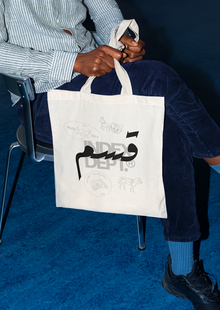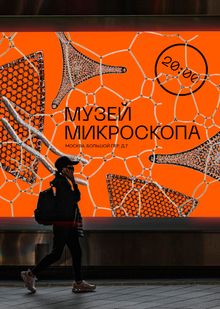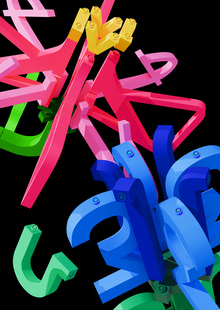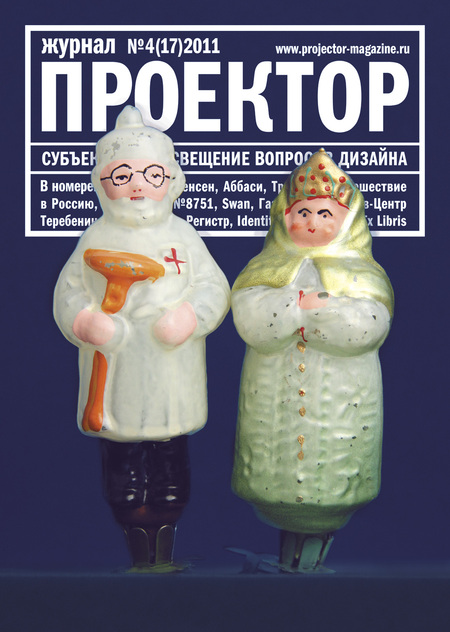
Projector magazine. Issue #17
«Personification» opens with by Pavel Ulyanov’s article about two best friends — the Danish designers Hans Wegner and Børge Mogensen: «Born in April, with the difference of eleven days, they would be classmates, friends, partners, but will live two amazingly different lives. Hans Wegner would live thirty-five years longer than his peer, create more than five hundred furniture masterpieces, receive almost all of the world design awards and become the most award-winning Danish designer. Børge Mogensen, not spoilt with prizes and awards, would introduce his furniture to every single house in Denmark, and the Danes would call him the most social designer, who changed the quality of life of every citizen».
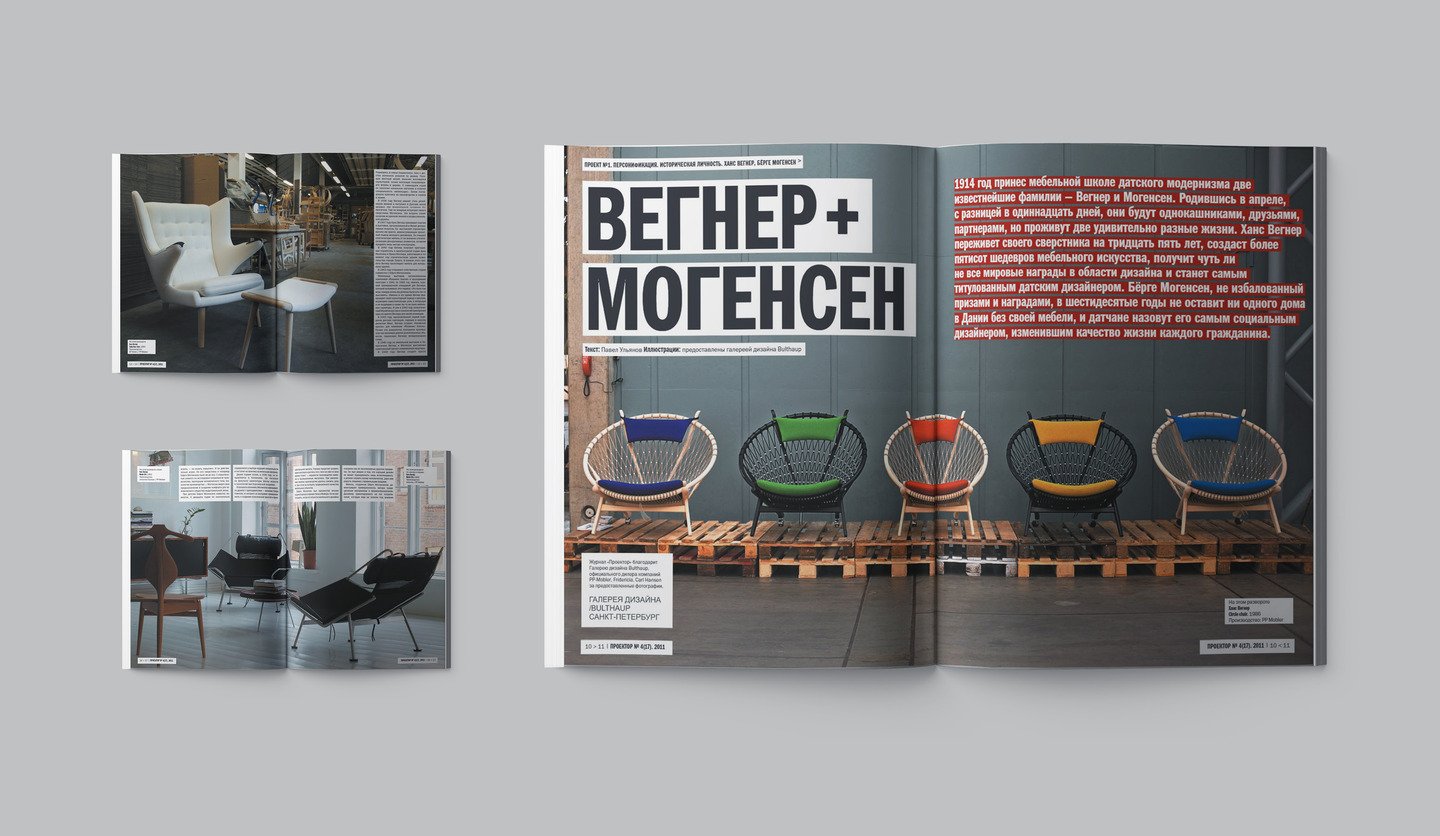
Continuing the series of interviews with the world leading poster designers, we share the conversation between our contributor Olga Severina and the Iranian master Majid Abbasi. «Iranian intellectuals have been linked with the Russian culture and art for over a decade. Russian theatre, literature, poetry, music and painting are well-known and loved in Iran. <…> Books in Russian, or ones dedicated to Russian artists and designers, such as Repin, Shishkin, Kramskoy and Rodchenko, are the usual thing in the home library of an Iranian designer. I think these treasures of Russian culture are what helped me to find the best solutions for some commissions of mine».
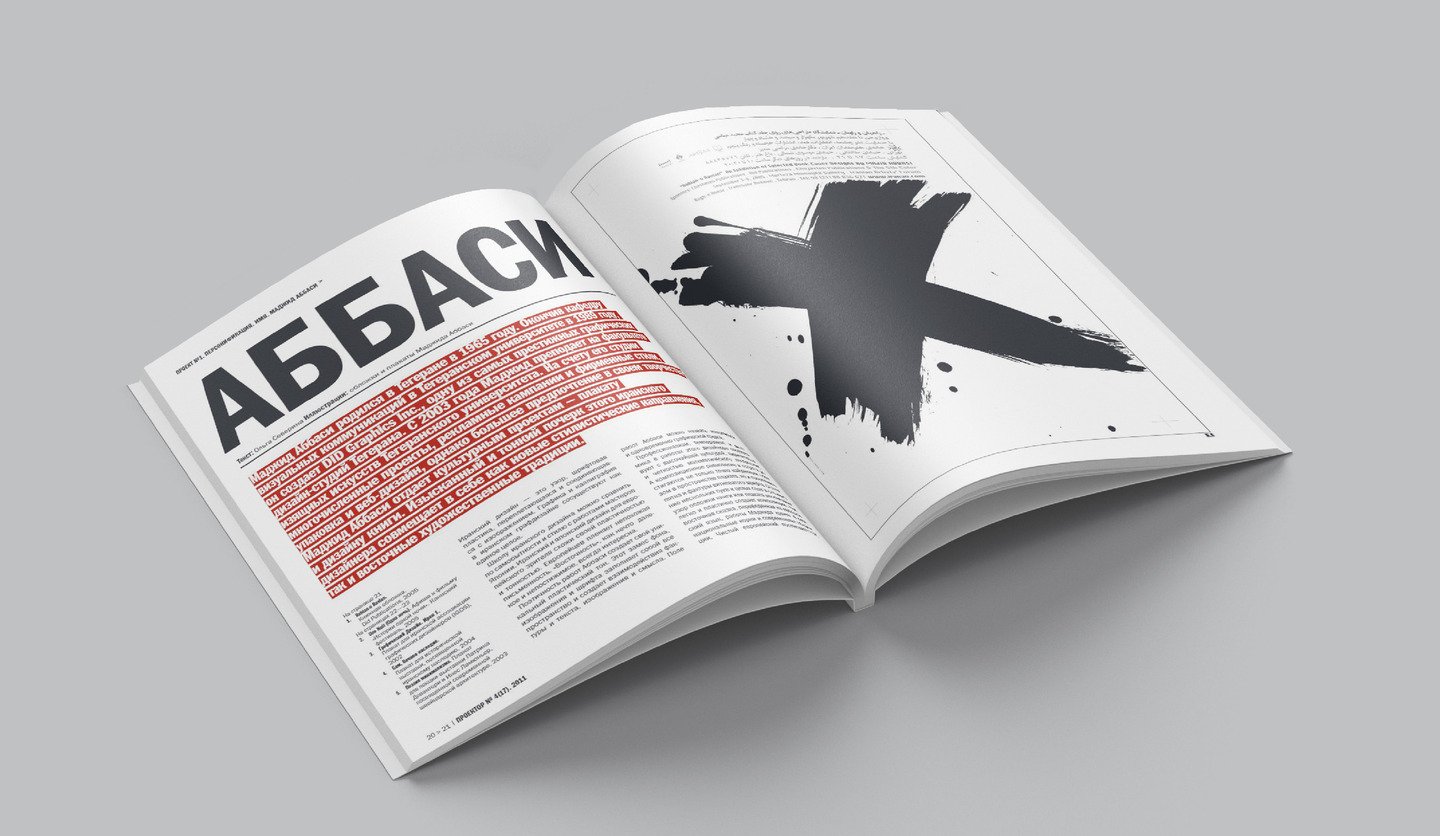
Section #2 «Lettering» this time considers the past. One of the publications of Projector was drawn stenciled by Yaroslav Ivanov. It is not surprising, as the article considers particularly this wonderful type artefact of the pre-computer era of mass decorative arts.
«Object» completes the series of five articles on the wonderful design objects by Martela. This time we feature the Cube modular system, able to take any sophisticated shape the designer wants.
It’s sometimes useful to see canonical books. This is how, looking through the famous yellow three-volume Design classics of Phaidon publishers, we found bentwood chairs by Thonet brothers, which have long been used by our editors in a chummy manner. It turned out that we would sit down on the legendary Thonet № 8751, designed back in 1928. Live and learn!
Projector curiously and with sincere sympathy watches the new life of one of the most famous pieces of architecture in the industrial zone of St.Petersburg. Last autumn marked the beginning of a new and interesting period in the life of two gas holders. The masterpieces of industrial architecture now have new tenants under their round roofs. The specifics of Rock Garage and Wild Side Studio very well fits the concept of the old industrial architecture reclamation. The brutal style of the motorcycles and classic cars synergistically coincides with the might of the red-brick buildings. Anatoly [«Count»] Dizhevsky, the ideologist of Rock Garage, answered our interviewer’s questions.
«Photography» section features a wonderful photographer Alexander Terebenin. «Overall, I am very close to his approach to shooting: Alexander often snaps fingers at many colleagues’ inherent snobbery which denies any post-production after shooting. Say, pure photography should remain pure, and any Photoshop is a diabolic trick. For Terebenin, this statement is at least debatable. For him, the final result is more important than the process. And, commonly for designers, he believes the tool giving you outstanding results isn’t that significant. The main tool is still in the author’s mind».
In section #8 «School», Sergei Helmyanov, our permanent contributor and a tireless researcher of the Soviet design heritage, recalls the authors of the legendary industrial objects of the USSR. This issue is dedicated to BelAZ and UAZ, tractor Kirovets, Gazel minibus and other well-known objects of transport design, the authors of which all graduated from the Stieglitz Academy.
Section #9 «Books» opens with Mikhail Karasik’s publication dedicated to the rare and revered form of books — the register. «The principle of a register has allowed to simplify the search for a poem you need, organize a table of contents, of „always at hand“ but not hidden at the back of the book. The digest For voice, published in Berlin in 1923, became the standard of printing expediency, clarity and functionalism, and set direction of the Soviet book development a decade ahead».
Andrey Pourtov, the publisher and editor-in-chief of Identity, answers the questions in an amazingly open and honest manner: «Previously, I negotiated with some companies that were supposed to be distributors or buyers of our magazine. We showed them printouts of the future magazine, and asked which money they’d buy it. Well, everyone said they’d be able to sell a lot, so we foolishly had thousand copies printed, but sold just 35 or 40 magazines after all. Of course, we were astonished. Something else was sold after a time, but the rest had to be distributed for free. This is what I thought of the second issue: „We either sell it properly, or we’re dead!“ We published a thousand copies, and it was all sold. Not immediately, of course, but we didn’t have to give it away for free this time».
And at the end of this issue, there’s a small but well-deserved praise ode to the book by Svetlana Mirzoyan and Sergey Helmyanov: Mukha. Saint-Petersburg School of Design, given by Alexey Boyko. «It was worth reading in it and making a discovery: all of its resemblant qualities don’t convey the true meaning. My fellow reader, you hold in your hand the Red List of a successful School of Beauty and Use, which is now transforming into an efficient talent foundry of creative artists for the multi-vector market of design. Like any Red list, it tells us about what we cherish and what requires tireless care and concern».
